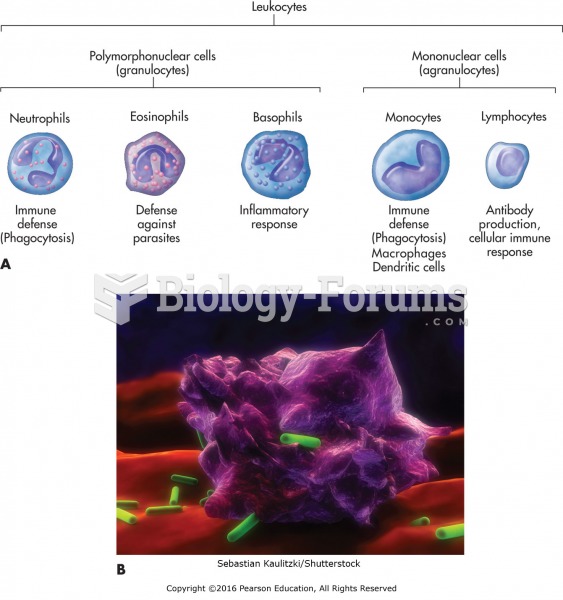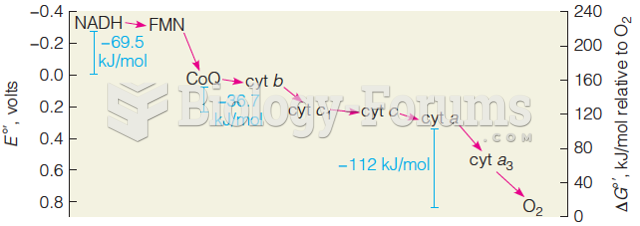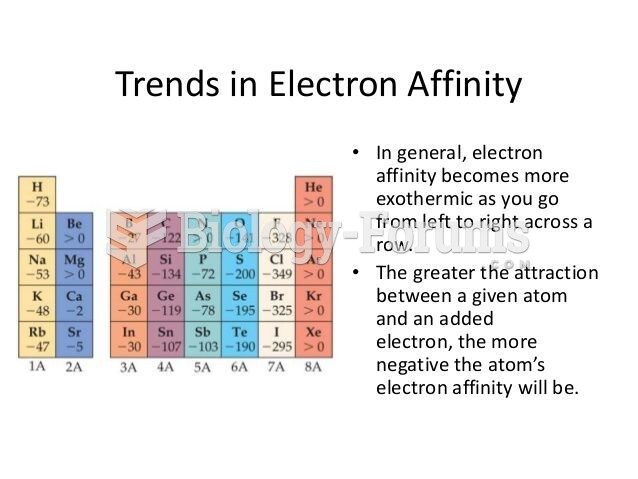Identify the atom that has each ground-state electron configuration.
(a) 1s
22s
22p
63s
23p
4 (b) 1s
22s
22p
4Question 2Write ground-state electron configuration for each atom. After each atom is its atomic number in parentheses.
- Sodium (11)
- Magnesium (12)
- Oxygen (8)
- Nitrogen (7)
Question 3Draw three contributing structures of the following compound (called guanidine) and state the hybridization of the four highlighted atoms. In which orbitals do the three lone pairs drawn reside
 Question 4
Question 4Estimate the relative contribution of the members in each set of contributing structures.
 Question 5
Question 5Which sets are valid pairs of contributing structures?
 Question 6
Question 6Draw the contributing structure indicated by the curved arrows. Show all valence electrons and all formal charges.
Question 7Describe the bonding in these molecules in terms of hybridization of C and N, and the types of bonds between carbon and nitrogen, and if there are any lone pairs, describe what type of orbital contains these electrons.
(a) CH
3-CH=CH
2 (b) CH
3-NH
2Question 8HXEgbXUlRTKfOy/tcGwQG9S/9a1vLeC65jWv2X3gAx8oPAG2FNByL44gnDxYkflR3/e+9y0LHfhek+JAa86NqyZAv/a1r+1Iay6clqMB7Te+8Y3upS99aZHmxsNZRraSSmhxNy4HoimuhAPWJWexz0rSmUTcsdVpjLDwmrHqoQ99aJGaV7ziFbtb3/rWZXLbVJJVKcD6nOc8p3vCE55Q8kuqWq3EQYMEv9nNbta95jWvKZbD3gIB+YMe9KDSKQC13RiEp8ZLOxsIjKtSK0PUot7eOc9689T+Nw7gwNe//vW5YcTYkjiN/qIXvWjZWeHDH/5wmYfjmXXAAQeU3RNIVAuwARgoqNmMU8a9vFLMF1/vetcrAOZFI0xNrNhXv/rVy/3M8wGvjoNUR8lHHW/Y6+RJvjIESNx+6cpDjoRr57XHgX51u/ZK8f85XpEkrplxq1vdqnMY9zr4qIY0fJTwP/nJTwpoSGQAN3dH4tYEYO985ztLHOmRttKxT5L55AMPPLC7//3vX+aXhU3adRqDrsUB3jjDM6RZEvnZz362qOzStWMEDYANwAINlPIMSr89n08OqNf1RCuWxGFGJJmxcgCssed+wjkb93KXtFyR2m1hP6D2Mhe4gVeanuX5Ix/5yAL8N7/5zXWyY10DMPCan7bKhdpOU6Al/Pa3vy3TW/b0MlRw5hs7LwaNsQrcIo3MAZ29OtcWtcnUv/vjCI+RMzAgwtiSuDfdelwKbCm4cAGfe0D95S9/ubvd7W5XkjBGTpiaIa7FC8Okn3Ts+sEP+6Mf/WjHQSRhSkIDfnQsSUeaVtTYfA8xwt30pjctS+SMt6VrqsvY3Xpna6etyHr/+99fNABpyWed7wGvb4/XKAe0BYf2q/1EsChOP0E1y2KOLYmXy2Rvo64bOl9oSwe5TNbUG8ez3nv1f4ax733ve0Uy1ukMew3A1iEbAlhdZZz96Ec/uoBTpXBO4R5qrG4lzJOe9KQCeF5qgM5Cnkod9p0t3HxwoG5Ho+QIeAkQszGvfOUry46Zqw1g+Z8KiJdjDOkFGHqylRCDGkCNauZXgQAMhLYUUiHUcr6wXDktIasrJvkVHtiN0y3+oH4jaTWaXw7U6m9yGU0s/+uz9tEL8oTXbu9973uXaVFegzrxeaCVIWmMEmAIxmYrFkm4ByyDACEMxrFsU30RC7jVKRe60IWK4clCCpLTKpV+lAp64QtfWMa85rflR2cg7bxDXGHlLXGMh42bqdWMaizyptQazS8HbG/M3oJSj/1y61lA6Vo7cCSea9vhMnDaD71uv/3Sm+W9mYPYBgF2+zAHzAEESByoBkwvE0jHMBVQMdpG4SSyOTtLE7Mgg5TnKGKKyu6JQM3by0IK14xZ1mkaC9tpgtqsAvP+5Cd5yH9nQAZcU1/Pe97zGojDpDk966RrcMpmPzDnXq2FpUjq3cFOou3S1oRPnIRbrfPMQQxAfJ+f+9znFhBQYwOSQUzxXIUArfGwr0Rw/EAAbucGlmaS2sIJYcwru28sbpxLQnun5Yw2p9dLq7iAeFBFeA/ruzLw6f71r39ddmMYFK89Xx0O6NC1G3WcdpZznaMIiGw+z1ZSb7nswwXaCiGkDXFiol7PA80cxAptixYqKcsyA8Eg8IZRKgQjzSmbu+Vb7T81HAhJX0d2UEw8qg8LM4BTr6jBH/rQh4oRK72qih02H+JwF5Xut771rQbiMHoOz/3Aq72krl1z5dUpk7TalFV2/AN6yZDLFyMIINqbcXG0v6QnTr9OojetSf6fOYgx1RyxVU3AeOUrX7l7+MMfXpiawudcMwSz9ZZUYFKWPzXgSq+mfmBUOZe97GXLISzV2jRRGJ/35X+dXr9r71TJ4v385z/vF6TdmxMORMLKjvpyqD91TSPjMagtDEMAjGwf5bAcly2GX4EPJ6AImvJnRj8zBzEmYqwPWXGosGKJBxcvLKoKwmDhalABC4uwlU7GOSzF0qnDJO4g3pHeiEqEdAbIO4chHUq2GOIE0mhtcCDtCngZM63CA0KkLaUdDCpN2iZ12iZ4pp3sN0flpuXNmlbFRg5EGGGnTIv9X/KSl5Q1yT6Sxteamorhzj6wRu22Ef0JJ5xQljLe9ra3XZTAwzIeYwNSCzeMzUl0qpMKzLNBFSCcOFwzjZ90Jo3mgwPaQm+nXueMXcSuqqYVo9kZGqHl4tVp5Fo7kIb4hIHh1R577FHaUsKMmmbijXqeuSQO6Kg0ro2POU/YM8sXHai+ekfGA1t2cgwxzuWIYToJcDAwDHLO9aDCJxx1Wqdgzvee97znYg8cyQ7grmtVPSAHYPPJlmHKc/3NqPr9SSvv9Cz3nDWAjUjUTYSfdT2OwovEFYdACHh519V15nn47L7NK9SHcWyMUqnXup4G5SVhpSm+M4GjXpFpqG9/+9ul7Q5KaxLPZy6JMVxFOgJo00SMBqacfGv2bne7W5nC0bN95CMfKRLYlj0AjDBR3FTeKIzAcPHNM1vsYB2zDfzcT5qmkViyU1nSz7MYNoyBDAFq+tSnPlX21Db1Rc1y8Ezz0S9DBmmk0ut4G+k6NoSAZ9yypx61I/UEQOqtdv5xP/y2Lp2mR3K6l7oY9/298fIu9/n2W288Ky1t5pK4t/D+v+lNbyq9lhVNVgrZ5aOXVBLGr4TScJxVKoukBQ+mErhxAq5KtomBeWAOIXpt4UlnALYHmCEATYE6bt6ZxsA498Y3vrEYz3zdQDnk2Ybh4rzsZS8r8XRMkQ4rKctajWtLYv7yZhBWAiSgcZh1oK1FCroXUm80pUMPPbRsRoHvpLX706iDvFub0aZMgerQSelp0lyAWMXa5kfDpx6pEExOJWN6GLQSZiQN6UnbairvtRjD0kbGNhLWPDMVXy8PrOaFuV0amxu/P/axjy354/RBoptm4oftiwA+PN1LtAhxuXlqRLy9NiLhv07SElTTNDpFktP91A2+pMOu671+rj6MbXWQT3nKU4pqrD5705GWDSviIuvdCRfQT6Me5BsBsm1yY+NxL88m+d6ZgxjzMDtAsvCAMcueWgh4gSdMFhbjJ0V1D0w9N19MA/CNW3uB+RIFogYb+zKm+eQIwHMQMb8NxIhEAUiNg1pujrGXqH2mo0hvZdGg7E5iCLHRKHWJJzo/UoqGk/bQjx9pJ54Jq21w4rGVsRkCVmaARmkzSQfYOW3kmfeEpgGmpJ32ysee8ZamYHeb+v0JO4nz5NAxZG5SYSmQvbNYC024o9xPj5n/QyY/UjAVyZDmkxw28DOGlR9GD5+Uuf71r1/UblLDnKCtcwE4U1QMGKYrGN54bqE8S0aUQ6NF5sZZxqW9ESnA0ZHi8THHHFMO4MQngESeq3f3HCQZ+4UvfnDXNQyiqpJy4i5F6lZH4b3TbEdLvV/nziHk4IMPLu075V8q/Lj3Zy6Jw0xnHlQkmLHkapA8UJOpyNYm27APAaJeno+2FU4+yxqjWt3b27zeOJobKHCKl/LV5XFPPJZtFnYGPJJ9oxJ+hCemfQCRUWrPPfcsKjLNxbCGuq1+uM2SvEAO4HgJ3P14XfMUaAAJ5Z3182lfe6dyIUNGgkB7mTTNDMTpDVVAmG+DPOMGUzWzooBQI6Am8wBjiDBeJWU1HBXPqcQUFIBz8QTixE3+SQVAt7IJ1WWry5Pw7jHaUfM2KkUrSfnxhlR24CcrfsbKOQurvjgDRdMJmJeTbtKO9VoadT3k/bM6M+QxghqeTZqmAuI05pzrXtM1YuABYlbdOFxg8jQZrcI1Ij0/JxK7g+y8887FepxPxYTBjF3Gr6zY1GoNjOqcMgmnl40K6H/KljSce8tDYpvS2ojUD3C5h5faASKJdaTU5UwZpW0kvHOu55mXqX/tprcDm1S+pzImlnGZ1lumYRvkn3jiiaWnpapylhDOFI/KUMBpV4r3yZN35Tu55qUBmCToJfN8vkxBnYsxK5UirLRGJeO7aU85jJqneQhvmg6ftRcqNqp5PQ95nNc8TAXECpsGDqyma6icPKWs8QUaVl2LHxiFVJYjgJ8ms7yDRfwrX/lKUZUZPwC49906IQcrsvlic9kMMXXDUg4W6/hgD5NvCzeo743OyIG0Ax0+tTlg
Question 9PmPIdqfmwMRAHPXGWWVoqMz78Sfl3cT7ysZ0AOE+MAkjrLHLtCVxCs6YpkOhJiPv7gVxGpTnnD9Yrs0D18Q6ba7SHDEC+t4y+O9+iIFD59XojBzAp6icQFx3dmlXZ4zV7kxkTBwG50w1Mt7kNMFAZMP4XuJaadqAUcv8ar7o0BtuGv/5tdIMAtxauvZ7n3EvbYJbJRJeY+OLy+LIzY6EZYjREOv0MkzwLhvrU9/tmNloNA7UnepoMdd/6IlIYgwG4JDPkvIdNZ4EYA2Zyuqsh42F0X7TQO4zpeLMioxJSd9RyHpkTimmPAJSQwabGlD/IpXTMSRt72FIM6/JAn6/+92vr1tpwrfzGTkQABMODKIo984YeuPdmQiIsS1SWIPmJ+wriDawy30NXgPP4T6pZQkXl0cOFTZrT1p1pzDpagGqdCR5X+87AtTct4cXFZzFNHmTf3t0fexjHyubA/DgOuSQQ8q60oQ57rjjihGNeycQ89zSmTUajQN4BsDqTRtivTaX7FrbCqh76220t0w+dNpBr4Y2yTdNBMQymswyGDFImJpBmBrg9rsWhnQSxgbtqE6v3JjwDzWYkYpE9q5oCilD8pDXmqC3+8Nd73rXMg0iXDolYcwjU6f5BOuQfGrGVJLDNddOEpvjSBwWknY7D+ZAb3vw35QUEDtYtXvrZHCqsw2hjU2rg5kIiLEDExH3QypkfINzvx/LPHPYrsd0jsaOFHZaBZa+TsPqF15T6Vj65TP3aBWkgD2H+5EKYmW3+yU7AMOdTswmfry6+Pr2fmuqXzrt3nAcUC/qzdk8MhCTdK7VRUiYeh4/92d1TtvyPtrftGi0geEyuSBJEWam8S8TvDxSyKgZ1FSqeCgVlf+TOnsff9p99tmnbA3EUmxs3lvZ8uawxzCf5/g998uXsqfcrNgAHE0k+c40FgneaGUcSFvrbWekcj0thedmD9gzUG/4leVi6dhpSzzz4sDCuUhepkETl8TWb2JWfEaXY5xnKoS6auzIoo0AYlqU/Pg0qqWE/KLNA2sANZne8OkW89n2AbOzCAq467CulSONq37mfQ49cb/nddh2PRwHtI90mqnP8LluOxkGSbW+P9xbRg+VvDCA+lAgt17t2lDrbW97W1l3Pnqqg2NMTBJjEiljfMj4YD6Y2rocJY6N7xi1jDmnTUAof0BlvtiCBIeVJkC9ww47lMX+RxxxRHHiIIED4KXyJk2Ucx2uvldf12Ha9fQ4YHmpTez4XQdk03pb6tewkM3FTAYDnA30DKt04tPoTCYmiWUQk1hwjQUtgleI5aQP0PN4AhJxqLbSCDMmzexUovRdG7sDqekwK2hsPWr8y0/aYnK9aACcuJPOU0tvuhxQtyTitNpUnfu0EW3G4hlLJy2wyXrnOuwkryciiTGoBqvpIhKZgwQvp4xJejNuxQrwGkOYeqlpGkxPms4Y7nCt8zA15GDAqlcZpeesy1fns13PPwcszAcka9ZTj2kLk8x90iScXLOPMJ5ah47Slib5TmlNTBLLdArBp5hXEsMCq7OPc+sN89VB6gX1FXhYFK3lVeCACqOT1qQLnHx6R7/31AAuDFpirDvpfLX0psMBwyaaFelItWVoisScdBtLurGQ+9oItXraNBFJXGdSQYw5OT5wb7TtzgEHHFC2tbGUD0iAWRg7XNim1njFnG0vgOp023XjwDgcIP0A2cYNbC6WgdZAHifNpeKkUzDTguytFkAvFWcS9ycOYgXBNEStsIuFYxBZTdSocWDSHIgKq00yoNouxx5n7CGRnJN6Z9KLNZpRbRY0cRDPItPtHY0Dw3IAsEjDSERr2YHM/wgbaQkXSToo7YQV3kFYSSvzwzTPWVID8Sy53d61qhwI6OzXBXiGdfkW0ygZ6wU79ZxthxfgalAD8Wpwvb1z1TjAmEnFdlgHzimJ9djHAkal2HBsCsG+Y0p1NWjTQhT51Xh7e+e650Cv1FrtAvfmR/M3Prbpv00bhyFpmIq0jJYrZe3qOUz8UcIMA88G4lE42sKOzAFqa4xLI0ee4wg28/ONYiDL9kxcdzPLkjG4smezCCq3/8bPOgJTXsIjHYj7dlUl0bn9SncYEDd1eo4bynrI2noEsHqx5NRuqEBIKgNbFmAYIwNxAMvRxDXVne9EZmKyJlpHp0NwNt1qVZYNEALwQe2ggXgQh9rzFXHAt6yomxmLriixOYocxxGAHZa22267oYKOuqVxU6eHYmsL1DgwvxyYmNvl/Bax5axxYH1zoIF4fddvK90G4EAD8Qao5FbE9c2BBuL1Xb+tdBuAAw3EG6CSWxHXNwf+D8AFZ1jC1C2ZAAAAAElFTkSuQmCC />

Question 10
Which molecules are polar? For each molecule that is polar, specify the direction of its dipole moment.
Question 11
Q7+Nk1a9yseGP74jDZkLCunXr1v7rgvdx5F8QnvgyIhARiAi0LARgKDBznJiQ5rblzzPvuEr9zJXDkThghl0Rfa2AhIjmjqTKAUaUj3KyfPmQQw6xOXPmuGV34FCOEyMPSQN6OO+DfRaWLl3qDvpSHRWLH0f+xRCK7yMCEYGIQAtCwB+1coYEW/2iihbjY5SqH35iNvjB+NgNkA1uunTpYhdffLHb2rYYQ9PmNFJp1zLcYvz33nuvO1iLzas4ZIvliuDBe666DykLceTAMYlj11TOn+jWrZuLFip8ROafBOUYNiIQEYgI7OYIwIhg6DAvDsfipEOYtxiUrjApMTkgIQznNHC4DIyRHydQnnHGGW7tP2EQJNjmm7ls4sqtX7/tbNWVK1fascce67wlVJAfP4VX/opbjasYMnlTTg4R4wwKynbbbbe5eXiYLuFEq+IUo08YEs8vm555zz14kLfqRumSr8/w/TQUJtc1Mv9cqES/iEBEICLQghEQ42INuQ7dCYEDgzTU3zAg5q7XrVvnjOEaGxudH0yf8x4YrYqZ++ledtll9txzz7lNcjg7gWkFaIHhianp6sdL6z6bRubcOauC0/pYx89mPtAjxiw6YNKhjvh+mRCQKDNGfuAlDMAMTQzr+QnDJkLEw49pBwkJqrti+UfmXwyh+D4iEBGICEQEiiIA80F9f8IJJ+wQFmYvBsZmQWgE2BhITAoGhtHa6tWr3cmBMFTOAWHJHMcJ40jbFwB2yCDFBzFlBCBOzGMDnxdeeMFuvfVWdwKlaOMKfSpTUpJIE0NJGDxz9+RLmcFNZecKbuy6OHPmzJ1O70uKT91WUowuIhARiAhEBCICFUDAZ1ZihlzxFzMtlA3b2w4fPtydbgezHTlypCVZwlYo7aTv7rvvPmfFz6FGGzZscPPqY8aMcduUo2r3y8O9/5wkL6ZC0I5gRCkjy3zxWdrHuQEIJKIBbME4Sf5x5J8P4egfEYgIRAQiAokRgAH5jMgfX4YIAAcddJDBdJlXx3CQUe7gwYOd8aB/NohGukpTVxFciBGKJq6KJ0FF8Zl+mDFjhmOoq1atclv2XnXVVY7xa5SvdIgjP+XLs96TNoyapYFyjPAfeeQRF6apqcmN+tkWmOkONCTEZfpAaaAFYCqAY6/RAMD89T6bduVR6BpH/oXQie8iAhGBiEBEoKoIwOzEQDdv3mxTpkxxO+dxzxHfnB9w3HHHOUboEyZhgLh+Gn4Y3Yuh8qy89A6mfMstt9isWbPc/Lr8uXKAEcvqOD7cd37evn/2/fTp0w2jRgwj58+f77bm5dAkGDnMnSmRzp07Z7bshTb9eC/hAWYP48+mPTu/Qs+R+RdCJ76LCEQEIgIRgaoiAGNmlAyD04gWNffUqVOtoaHB1q5d61YPsLFOr169nLFbq1atSqaRuXamGhYtWmTz5s1zp/LB3DE+3GuvvRzDR+MADRxx3L59e5s0aZJjvNCKwR0MO5djRM8oHSbNaH7AgAH26quvOvph5D169LDrrrvOCRmk36ZNG2c3kSst3w9hQ5qEUgWAyPx9RON9RCAiEBGICOxyBPyROfcSAmB6y5YtM0bQMGvm4ffcc09r27at22yHufl9993XqcZh3BjHMUdOPE4ihPHCZDdu3Ghr1qyxJUuWGIfwbNq0yTF6jBX79+/vDA3ZcwAGyzJEbA5YvUAcwo8YMSKDEev799tvPxc247ldo4CwAPP33THHHOPU/fgzmmeFhJzK7TP0bD89cyWcH1bphFwj8w9BKYaJCEQEIgIRgZpCAMbMUkLU9Gyx+8ADDzitAETC8GGqjK75wShhtpyAp2WGCAfdu3d3+xKwUU/Hjh2dsBBSSIQOBApU7wgOaAyymTBz96eddpqbwyd/BBjCsCKiHE1FCH0hYSLzD0EphokIRAQiAhGBiMBuhECyfQR3o4LHokQEIgIRgYhARKClIvB/VxDy6jtWUzsAAAAASUVORK5CYII= />
(c) H2O2
The H2 O2 molecule can rotate around the O-O single bond
Question 12
Predict all bond angles for these molecules.
(a) CH3OH
(b) PF3
(c) H2CO3 (Carbonic Acid)
Question 13
gf8DO4s6G+z51CkAAAAASUVORK5CYII= />(c) H
2CO
3 (Carbonic Acid)
 Question 14
Question 14Draw structural formulas for the four esters with molecular formula C
4H
8O
2.
Question 15Draw condensed structural formulas for the two carboxylic acids with molecular formula C
4H
8O
2.
Question 16Draw condensed structural formulas for the three ketones with molecular formula C
5H
1 0O.
Question 17Draw structural formulas for the three secondary amines with molecular formula C
4H
1 1N.
Question 18
Draw Lewis structures and condensed structural formulas for the four alcohols with molecular formula C4H1 0O.
Classify each alcohol as primary, secondary, or tertiary.
Question 19Draw Lewis structures, showing all valence electrons, for these molecules.
(a) C
2H
6 (b) CS
2 (c) HCN
Question 20Judging from their relative positions in the Periodic Table, which element in each set is more electronegative?
(a) Lithium or potassium
(b) Nitrogen or phosphorus
(c) Carbon or silicon







